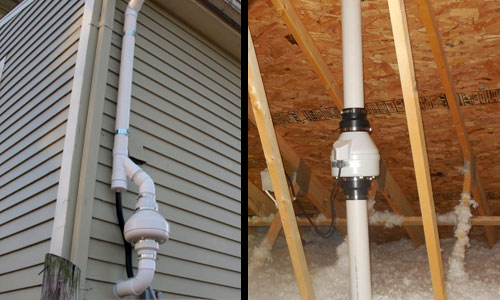Radon Mitigation: So, You Have Radon, Now What?

Little Known Facts About Financial assistance to reduce radon in your home.
Any procedure utilized to lower radon gas concentrations in the breathing zones of occupied structures, or radon from water supplies Radon mitigation is any process used to lower radon gas concentrations in the breathing zones of occupied buildings, or radon from water supplies. Radon is a substantial factor to environmental radioactivity.
Treatment systems utilizing aeration or activated charcoal are available to eliminate radon from domestic water products. Checking [edit] Change of ambient air radon concentration over one week, determined in a laboratory The initial step in mitigation is testing to see if the indoor-air and/or domestic water radon concentrations ought to be lowered.
The World Health Organization's International Radon Project has advised an action level of 100 Bq/m3 (2. 7 p, Ci/ L) for radon in the air. Radon in the air is thought about to be a bigger health hazard than radon in domestic water so the US Environmental Security Agency suggestion is to not check for radon in water unless a radon in air test is above the action level.

Radon Mitigation - Northwest Indiana - Lake, Porter, & LaPorte County

Radon Mitigation in Colorado & New Mexico - Radon Mitigation System Installation in Greater Grand Junction
An Unbiased View of Radon Mitigation – Radon.com
The United States federal government has not set an action level for radon in water. Air-radon levels fluctuate naturally on an everyday and seasonal basis. This Author (90 days or less) may not be an accurate assessment of a house's typical radon level, but are recommended for initial screening to rapidly determine unhealthy conditions.

When To Test Your Home For Radon Gas - American Radon
Evaluating for radon in the air is achieved utilizing passive or active devices positioned in the building. Some devices are immediately sent to a lab for analysis, others determine the results on-site. Radon-in-water screening requires a water sample being sent to a laboratory. Retesting is advised in numerous scenarios such as to check test results prior to spending cash on the setup of a mitigation system.

When a mitigation system installation is required, a retest after the system is practical is advised to be sure the system is efficiently lowering the radon concentration listed below the action level, and after any mitigation system repairs such as changing a fan system. Retesting is also suggested every 10 years.
